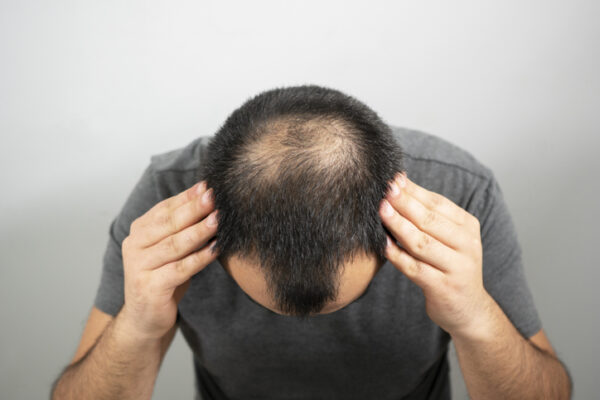
Hair loss is not an unserved market, but it’s not a well-served one. The available drugs are older products initially developed for other indications and they don’t address hair loss’s underlying cause, says Christina Weng, a practicing dermatologist and the chief medical officer of Pelage Pharmaceuticals.
Los Angeles-based Pelage takes a regenerative medicine approach to restoring hair growth, addressing a pathway that for various reasons, is turned off. In its first test in humans, the startup now has results showing that seven days of topical application of its experimental drug led to activation of hair follicle stem cells.

With the Rise of AI, What IP Disputes in Healthcare Are Likely to Emerge?
Munck Wilson Mandala Partner Greg Howison shared his perspective on some of the legal ramifications around AI, IP, connected devices and the data they generate, in response to emailed questions.
Data from the Phase 1 study have been accepted for presentation in March as a late-breaking abstract during the American Academy of Dermatology meeting in San Diego. The company is also preparing for a larger Phase 2 clinical trial on track to start later this year that will evaluate the therapy in androgenetic alopecia (pattern baldness) and other types of alopecia including chemotherapy-induced hair loss.
“What we’re able to do is go directly to the source [of hair loss], which is stem cells,” Weng said. “It’s a very clear pathway, which is well understood from many years of study in the lab.”
Pelage’s technology is based on stem cell research at UCLA. The startup’s scientific co-founders were researching signaling that could turn on stem cells. That research came to focus on dormant hair follicles. Follicles become dormant for reasons that include age, environment, hormonal changes, stress, and medication. In such cases, the hair follicle is still there, but it’s just not cycling the way it used to, Weng said.
Hair growth happens in a continuous natural cycle. Besides the growth phase, there are phases of regression, resting, and shedding. Signals from stem cells allow follicles to move from one phase to the next, Weng said. At the end of the resting stage, called telogen, hair falls out. Hair loss happens when follicles get stuck in the telogen stage, preventing them from proceeding to the growth phase, Weng said. Pelage’s drug candidate, code-named PP405, is a small molecule designed to inhibit mitochondrial pyruvate carrier (MPC), a protein that plays a role in various physiological processes.
Pelage CEO Daniel Gil said that for hair, blocking MPC is like flipping a metabolic switch that has the effect of turning the growth cycle back on. In mouse research conducted by UCLA, blocking MPC accelerated the hair cycle, leading to the formation of normal hair follicles within 30 to 40 days of treatment. Results were published in 2017 in Nature Cell Biology.
The Phase 1 study conducted last fall enrolled 20 participants, all men. The main goal was to assess the safety of PP405. Both once and twice-daily application were tested. Minoxidil, the vasodilator that won an additional approval in 1988 for male pattern baldness and reached the market branded as Rogaine, is applied twice daily.
The Pelage drug was well tolerated and no adverse effects were reported in the Phase 1 study. Gil said Michael Jung, a UCLA professor of chemistry and biochemistry and one of Pelage’s scientific co-founders, designed PP405 with properties that get the molecule to stay in the scalp and not enter the bloodstream. The trial results showed the drug was successful on both marks. Results also show the molecule engaged its target, offering proof of mechanism, Weng said.
The Phase 2 clinical trial will enroll about 60 participants, both men and women. Weng said it’s important to develop a drug that will work for all skin types, hair types, and genders. Finasteride, first approved in 1992 for treating symptoms of an enlarged prostate and later approved for alopecia (where it’s marketed as Propecia, among other names), works by increasing testosterone levels and cannot be used by women, Weng said. The Phase 1 test showed once-daily use of PP405 had the same effect as twice-a-day application, said Gil, whose experience includes overseeing research and early clinical development at the former aesthetics giant Allergan. The Phase 2 study will evaluate once-daily application of the drug.
In addition to old medications like minoxidil and finasteride that have won additional approvals for alopecia, other therapies have found their way into the hair loss market—some without FDA review. The injection of stem cells into the scalp is one such unapproved treatment. Gil said the elegance of PP405 is that it works with a patient’s own stem cells.
“You don’t have to inject stem cells in the hair follicles, the stem cells are there,” he said. “This is a wonderful regenerative medicine story.”
Besides Jung, the other scientific co-founders of Pelage are UCLA professors William Lowry and Heather Christofk. Pelage spun out of the university in 2018. The following year, it reached an agreement that granted Allergan an option to acquire the startup. The agreement provided Pelage with non-dilutive financial support, Gil said. Allergan itself was acquired by AbbVie in 2020. After that deal closed, Pelage and AbbVie agreed to terminate the option.
Pelage will finance the Phase 2 study with what remains from a $16.75 million Series A financing that closed in mid-2023 but was not announced until this week. Unlike pricey and lengthy cancer and gene therapy clinical trials, a hair loss clinical trial is quick to enroll and conduct, and therefore considerably less expensive. Gil said the financing is sufficient to cover both Phase 1 and Phase 2 testing. GV led the Series A round, which included participation from Main Street Advisors, Visionary Ventures, and YK BioVentures.
Photo: ozanuysal, Getty Images














